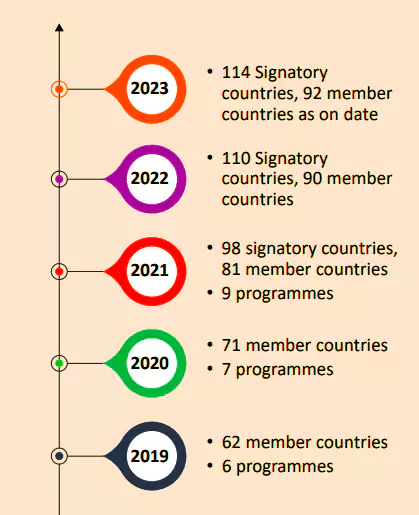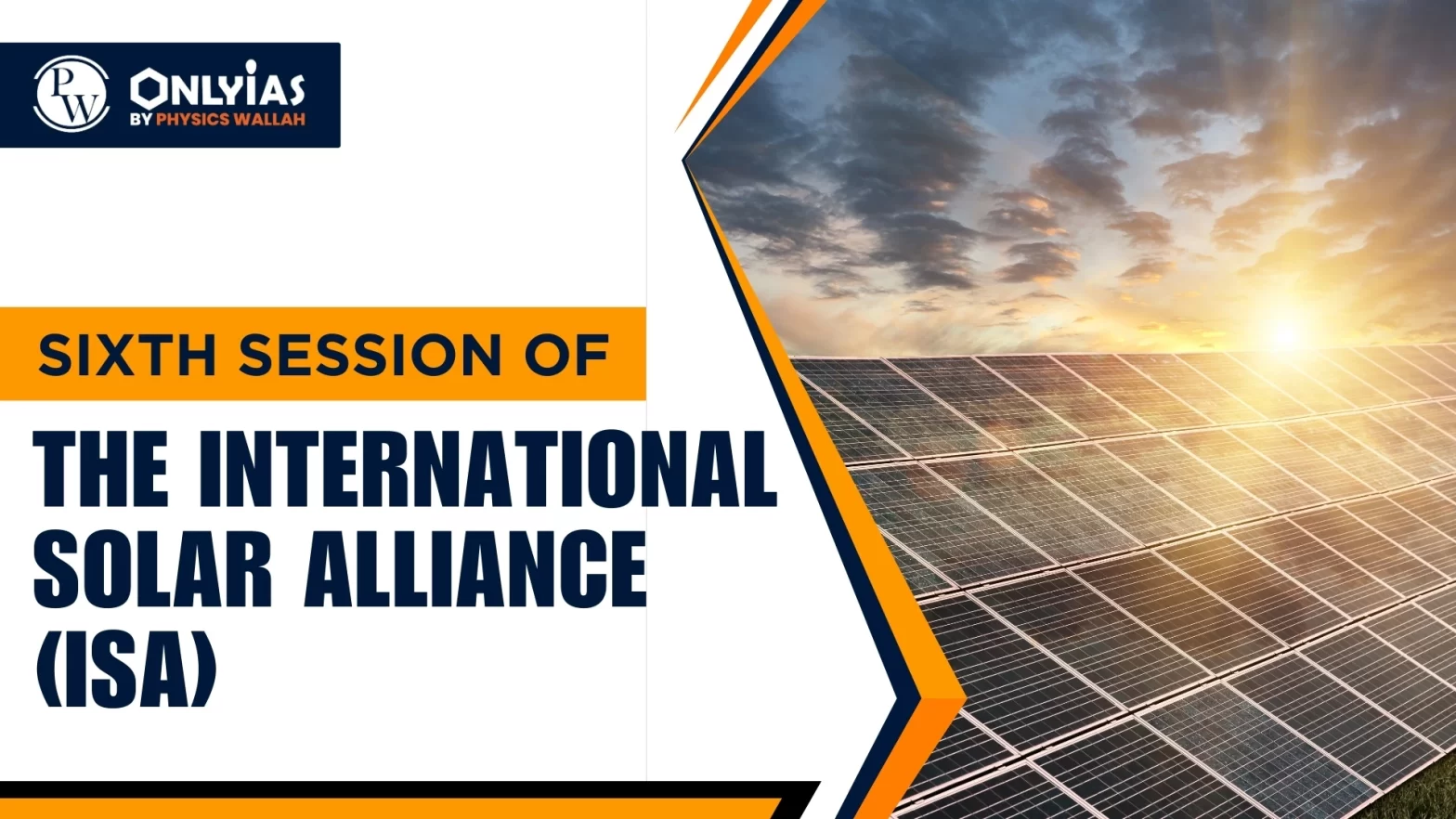Context:
- The Sixth Session of the International Solar Alliance (ISA) was hosted at Bharat Mandapam, in New Delhi, which has decided to increase the viability gap funding (VGF) for projects from 10% up to 35%.
- VGF aims at supporting infrastructure projects that are economically justified but fall marginally short of financial viability
| Relevancy for Prelims: International Solar Alliance.
Relevancy for Mains: International Solar Alliance (ISA) – Its associated challenges and India’s role in ISA. |
International Solar Alliance (ISA)
- Establishment: Established in 2015, following the Paris Declaration.
- Secretariat: Gurugram, Haryana.
- Objective: To form a coalition of solar resource-rich countries to collaborate on addressing the identified gaps in their energy requirements through a common approach.
- Membership: ISA was proposed as a multi-country partnership organization with membership from the ‘sunshine belt’ countries lying fully or partially between the Tropic of Cancer and the Tropic of Capricorn.
- The United Nations General Assembly granted observer status to the ISA on 9 December 2021.

- Target: 1 TW of solar energy by 2030, which would require $1 trillion to achieve.
Know more about India Hosts Sixth Assembly of the International Solar Alliance in New Delhi
Focus Areas of International Solar Alliance (ISA)
- Promoting solar technologies
- New business models and investment in the solar sector
- Formulate projects and programs to promote solar applications
- Develop innovative financial mechanisms to reduce cost of capital build
- Common knowledge e-Portal to facilitate capacity building for promotion and absorption of solar technologies.
Need of International Solar Alliance (ISA)
- Around 80 percent of the global population, totaling a staggering 6 billion people, reside in countries that depend on fossil fuel imports.
|
What are the challenges associated with the International Solar Alliance?
- India’s Limited Material Capability: India, being a founder of International Solar Alliance (ISA), does not possess significant material capability to influence other players.
- Diverse Challenges and Perspectives Among ISA Member States: Some member states are not fully convinced about solar power itself while others are waiting for more successes before embracing solar power fully.
- Limited Global Solar Capacity: Initially ISA has 121 member countries, which have only 23% of global solar capacity.
- Challenges in Solar Markets of Smaller Countries: To attract investors, and difficult for governments to know-how the various technologies and policies for their best fit.
- Land Acquisition Challenges: In India out of 57 solar parks commissioned by the government, only about 10 have been operationalized due to land acquisition concerns.
- Differentiating Itself from IRENA: The ISA will need to differentiate itself from the International Renewable Agency or IRENA and it is not yet clear it will do so.
India’s Role in the International Solar Alliance
- Green Hydrogen Innovation Centre: International Solar Alliance established the Green Hydrogen Innovation Centre (GHIC) at the initiative of India’s G20 Presidency in July 2023.
- Solarisation of healthcare centers in Africa: In 2023, India through ISA inaugurated nine projects for the solarisation of healthcare centres and primary schools in Uganda, Comoros and Mali.
- Capacity Building: The Indian government has backed the ISA by offering solar energy training spanning 21 days under the Indian Technical and Economic Cooperation (ITEC) Scheme.
- Funding: The Export-Import Bank of India (EXIM Bank) has pledged to fund solar initiatives for scaling up affordable finance, totalling USD 1.4 Billion
- Supporting Infrastructure: Being a founding member, the Indian government contributed $27 million to the ISA for building infrastructure and recurring expenditure from 2016-17 to 2020-21.
- Research & Development: India will also provide 500 training slots for ISA member countries and start a solar tech mission to lead R&D.
Way Forward
- India should reduce its dependence on China.
- Need to focus and strengthen the Private-Public partnerships.
- It is desirable to foster Leadership, Innovation, and International Collaboration in Solar Energy.
- Need to promote Solar Investment Summits periodically.
- Need to work on recognizing Solar Ambassadors to inspire Global Solar Advocacy.
Also Read: India Records 76% Drop In Solar Module Imports From China
Conclusion:
The India-led International Solar Alliance (ISA) has taken significant steps towards funding, policy, technology, infrastructure and capacity building. However, its success will depend on the commitment of Member Countries and international partners.
| Prelims Question (2016)
Consider the following statements:
1. The International Solar Alliance was launched at the United Nations Climate Change Conference in 2015.
2. The Alliance includes all the member countries of the United Nations.
Which of the statements given above is/are correct?
(a) 1 only
(b) 2 only
(c) Both 1 and 2
(d) Neither 1 nor 2
Ans: (a) |
| Mains Question (2022): Do you think India will meet 50 percent of its energy needs from renewable energy by 2030? Justify your answer. How will the shift of subsidies from fossil fuels to renewables help achieve the above objective? Explain. |
![]() 3 Nov 2023
3 Nov 2023


